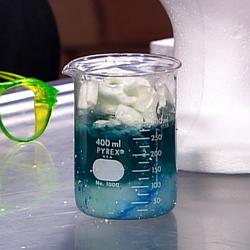Science Demonstration Gets Student Council Members Excited About Recycling Project
Sure, you can talk about recycling projects, but what can you do to get kids exciting about taking action and changing their behavior when it comes to recycling? That’s the goal put in place by student council members at Wilder Elementary in Littleton, Colorado. On the top of this morning’s agenda was the school-wide recycling project… but with a little twist. President Scott Rob discussed his idea of purchasing recycling bins for the school and increasing everyone’s awareness between now and the end of school. But there’s more…
The student council sponsors and I brainstormed another way to get kids talking about recycling using the Vanishing Styrofoam Peanuts Demo.
Watch the Video
The kids raced to see how many handfuls of Styrofoam peanuts it would take to fill a small container. Everyone guessed two or three… but everyone was wrong. No sooner did the Styrofoam peanuts enter the container they seemed to vanish… literally dissolving away. The secret was a layer of acetone solvent in the bottom of the bowl. Acetone breaks down polystyrene turning it into a puddle of liquid goo. The demo is a great way to show how Styrofoam packing material is mostly puffed air, and these pockets of air fill landfills around the world with no possibility of biodegrading. The lesson here is to understand the importance of reducing our use of Styrofoam packaging material and finding a way to reuse what we already have.
The student council members agreed that everyone should start a bag in the garage to collect Styrofoam packing peanuts that arrive over the holidays and promise to reuse the packing material in the future. This simple action helps to answer the question, “What can I do to help the environment?”
One alternative is to replace Styrofoam packing material with the more eco-friendly, starch-based packing peanuts. The environmental benefits definitely outweigh the slightly higher cost of the packing material.
Using cool science demonstrations to teach principles of leadership has always been a passion of mine, dating back to the mid 1990’s when I worked closely with Dr. Earl Reum to create a program called the Science of Leadership. I had the great fortune to work with the National Association of Student Councils and the National Association of Workshop Directors to pilot the program and to travel to state association meetings throughout the country with a trunk filled with science demonstrations.





Leave a Reply
Want to join the discussion?Feel free to contribute!